07 - 08 JANVIER
INDI-UNI : ANTHROPOLOGY - ARCHAEOLOGY
INSCRIPTION 2012 COURS A DISTANCE
REGISTRATION 2012 ONLINE COURSES
SYRIE – 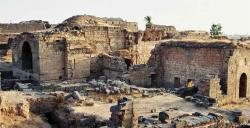
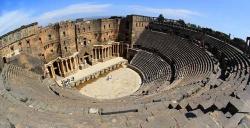 – Bosra - The team headed by Mr. Alaa al-Saleh uncovered several archeological finds dating back to Roman, Byzantine, and Ottoman periods, while excavating an area near the Roman bathhouses in Bosra. “The finds include a channel made of basalt stones and parts of the western yard’s pillars, in addition to two clay-made lanterns dating back to the Byzantine area and a basin in front of the street which leads to the theatre,” said Mr. al-Saleh. Archaeologists also found some traditional walls dating back to the Ottoman era. “The goal of the excavation works is to prepare the site for renovation and for receiving visitors and tourists,” explained Mr. al-Saleh. “The excavation project at the southern Roman bathhouses came within the Department’s plan for the last season to complete the excavation, which started in the previous seasons with the aim of discovering more about the bathhouses”, added Wafaa al-Audi, Director of Bosra’s Antiquities Department. The archaeological site of Bosra was declared a UNESCO World Heritage Site in 1980.
– Bosra - The team headed by Mr. Alaa al-Saleh uncovered several archeological finds dating back to Roman, Byzantine, and Ottoman periods, while excavating an area near the Roman bathhouses in Bosra. “The finds include a channel made of basalt stones and parts of the western yard’s pillars, in addition to two clay-made lanterns dating back to the Byzantine area and a basin in front of the street which leads to the theatre,” said Mr. al-Saleh. Archaeologists also found some traditional walls dating back to the Ottoman era. “The goal of the excavation works is to prepare the site for renovation and for receiving visitors and tourists,” explained Mr. al-Saleh. “The excavation project at the southern Roman bathhouses came within the Department’s plan for the last season to complete the excavation, which started in the previous seasons with the aim of discovering more about the bathhouses”, added Wafaa al-Audi, Director of Bosra’s Antiquities Department. The archaeological site of Bosra was declared a UNESCO World Heritage Site in 1980.
http://www.sci-news.com/archaeology/article00144.html
USA – 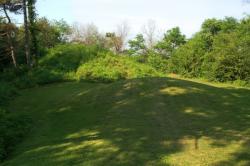 Quincy - Large, very old and now much easier to see, 11 prehistoric Native American mounds in Quincy may be the newest gems for the “Gem City” thanks to the work of local archaeologists and Native American volunteers who cleared decades' worth of growth from the prehistoric earthen structures. The mounds and nearby earthworks in Quincy's Indian Mounds Park date from 200 B.C. to 1000 A.D. Their locations within a city park formed in the late 1800s meant that they were spared from the urban development and agricultural use that claimed thousands of similar Midwestern mounds. However, over the years, the Quincy mounds had suffered from erosion, foot traffic, heavy vegetation growth and vandalism that had left them virtually unrecognizable. Then, in 2009, Quincy area archaeologists decided it was time to return the mounds as closely as possible to their original condition.
Quincy - Large, very old and now much easier to see, 11 prehistoric Native American mounds in Quincy may be the newest gems for the “Gem City” thanks to the work of local archaeologists and Native American volunteers who cleared decades' worth of growth from the prehistoric earthen structures. The mounds and nearby earthworks in Quincy's Indian Mounds Park date from 200 B.C. to 1000 A.D. Their locations within a city park formed in the late 1800s meant that they were spared from the urban development and agricultural use that claimed thousands of similar Midwestern mounds. However, over the years, the Quincy mounds had suffered from erosion, foot traffic, heavy vegetation growth and vandalism that had left them virtually unrecognizable. Then, in 2009, Quincy area archaeologists decided it was time to return the mounds as closely as possible to their original condition.
http://www.cantondailyledger.com/news/x735286572/Archaeologists-clear-decades-of-growth-to-better-reveal-11-prehistoric-Native-American-mounds-in-Quincy
FRANCE – 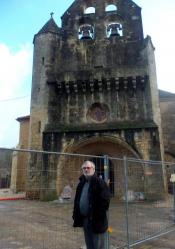 Lamothe-Fénelon - C'est en réalisant les travaux de l'église Saint-Sixte du XIIe siècle de Lamothe-Fénelon, et en ôtant le dallage de la chapelle, qu'ont été découverts divers ossements. Cette chapelle a été construite en 1496 par Jean de Salignac, arrière-grand-père de Fénelon, pour y abriter le tombeau familial. Mais la plus grande surprise est venue de la découverte d'un cercueil en plomb, dans un état de conservation remarquable. Après de nombreuses démarches administratives de la part de la mairie de Lamothe-Fénelon afin d'ouvrir ce tombeau scellé, les services de l'État n'ont pas donné suite, arguant d'éventuels ennuis avec les descendants de la famille de la dépouille, pour profanation de tombe. Et ils ont ordonné de recouvrir en l'état ce cercueil. L'administration a eu raison de toutes les sollicitations des archéologues et spécialistes, très intéressés par cette découverte. Après ces refus, la municipalité a donc poursuivi les travaux de l'église. Le cercueil a été remis in situ mais l'énigme demeure. Personne ne connaît aujourd'hui le secret de celui qui gît dans ce magnifique cercueil de plomb.
Lamothe-Fénelon - C'est en réalisant les travaux de l'église Saint-Sixte du XIIe siècle de Lamothe-Fénelon, et en ôtant le dallage de la chapelle, qu'ont été découverts divers ossements. Cette chapelle a été construite en 1496 par Jean de Salignac, arrière-grand-père de Fénelon, pour y abriter le tombeau familial. Mais la plus grande surprise est venue de la découverte d'un cercueil en plomb, dans un état de conservation remarquable. Après de nombreuses démarches administratives de la part de la mairie de Lamothe-Fénelon afin d'ouvrir ce tombeau scellé, les services de l'État n'ont pas donné suite, arguant d'éventuels ennuis avec les descendants de la famille de la dépouille, pour profanation de tombe. Et ils ont ordonné de recouvrir en l'état ce cercueil. L'administration a eu raison de toutes les sollicitations des archéologues et spécialistes, très intéressés par cette découverte. Après ces refus, la municipalité a donc poursuivi les travaux de l'église. Le cercueil a été remis in situ mais l'énigme demeure. Personne ne connaît aujourd'hui le secret de celui qui gît dans ce magnifique cercueil de plomb.
http://www.ladepeche.fr/article/2012/01/06/1254314-lamothe-fenelon-le-secret-du-cercueil-en-plomb-de-l-eglise.html
INDE - Kummarilova of Tuni - Archaeology authorities have found a Buddhist site at Kummarilova of Tuni in East Godavari recently. During a general survey carried out recently in the area, they found several Buddhist relics of the Satavahana period. They found bricks, redware pottery, lead coins and other relics during preliminary excavations carried out to ascertain the status of the site. They have prepared a report on their findings and attached it with photographic evidence, to send it to the director, state archaeology department, to obtain permission for excavations at the site and also for release of funds for taking up excavation works. The authorities intend to develop it as a Buddhist site. They have also got sanction to continue excavation works at other Buddhist sites located at Jagatipadu of Polaka mandal in Srikakulam district, Phanigiri of Nalgonda district and also at Kotilingala of Karimnagar district this summer. The authorities maintain that they found Buddhist relics like ‘Padukalu’ and others of the Hinayana sect at Jagatipadu while at Phanigiri, relics including sculptures and images were found of the Mahayana sect. Buddhist relics belonging to both sects were found at Kotilingala.
http://www.deccanchronicle.com/channels/cities/regions/rajahmundry/buddhist-site-found-eg-district-586
USA – 
 Tse whit zen - The thousands of artifacts dug up at the 2,700-year-old Tse-whit-zen village site on Marine Drive in Port Angeles include etched stones, hand tools and other hand-made treasures. But the artifacts, stored in 900 boxes at the Burke Museum of History and Culture, consist mostly of bones and shells that the Klallam people discarded after meals, said Laura Phillips, the museum’s archaeology collections manager. The artifacts are waiting to come home when a curation-museum is built at the village site two miles west of downtown Port Angeles. The examination of seal bones from Tse-whit-zen can provide clues about the history of the coastal seal population, Phillips said. The discovery of Tse-whit-zen was the second-largest archaeological find in U.S. history.
Tse whit zen - The thousands of artifacts dug up at the 2,700-year-old Tse-whit-zen village site on Marine Drive in Port Angeles include etched stones, hand tools and other hand-made treasures. But the artifacts, stored in 900 boxes at the Burke Museum of History and Culture, consist mostly of bones and shells that the Klallam people discarded after meals, said Laura Phillips, the museum’s archaeology collections manager. The artifacts are waiting to come home when a curation-museum is built at the village site two miles west of downtown Port Angeles. The examination of seal bones from Tse-whit-zen can provide clues about the history of the coastal seal population, Phillips said. The discovery of Tse-whit-zen was the second-largest archaeological find in U.S. history.
http://www.peninsuladailynews.com/article/20120108/news/301089984/special-report-tse-whit-zen-artifacts-stored-in-seattle-but
GRECE – 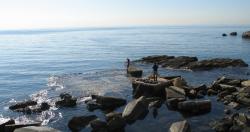 Mikrolimano - Le Pirée : bilan des fouilles 2011 menées par les archéologues danois à Mikrolimano (baies de Mounychies et Zéa). The Zea Harbour Project (ZHP) – a combined land and underwater archaeological investigation of the ancient harbours of Zea and Mounichia – was launched in 2002. ZHP’s mission is to survey, excavate, and publish the archaeological remains of the naval bases of the Piraeus, including the harbour fortifications and the shipsheds that housed Athens’ fleet of triremes.
Mikrolimano - Le Pirée : bilan des fouilles 2011 menées par les archéologues danois à Mikrolimano (baies de Mounychies et Zéa). The Zea Harbour Project (ZHP) – a combined land and underwater archaeological investigation of the ancient harbours of Zea and Mounichia – was launched in 2002. ZHP’s mission is to survey, excavate, and publish the archaeological remains of the naval bases of the Piraeus, including the harbour fortifications and the shipsheds that housed Athens’ fleet of triremes.
http://www.amna.gr/articleview2.php?id=6044